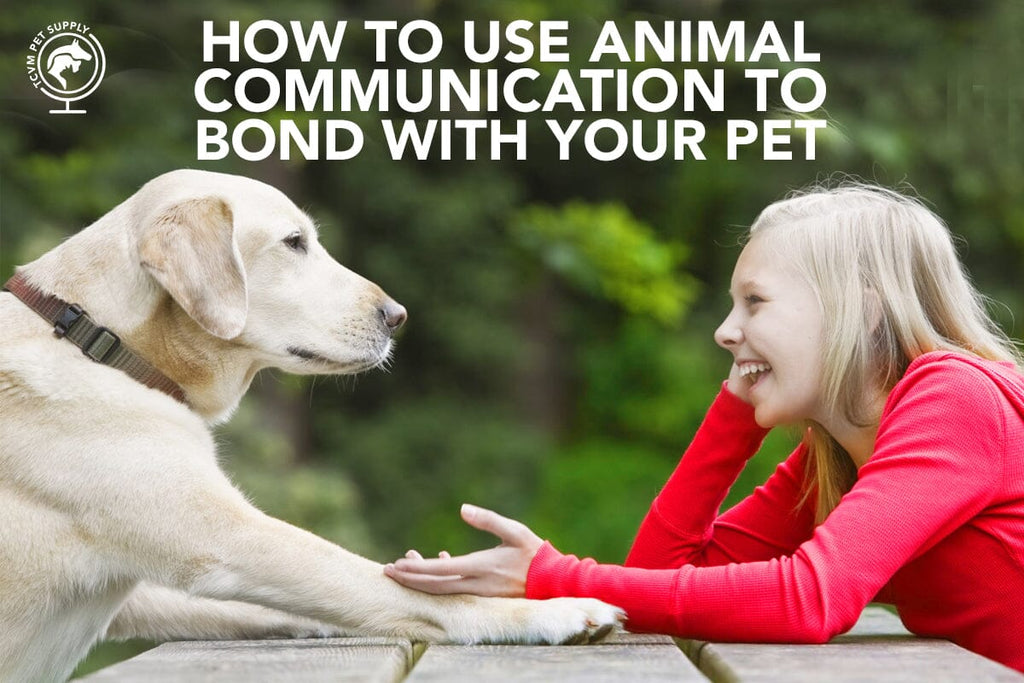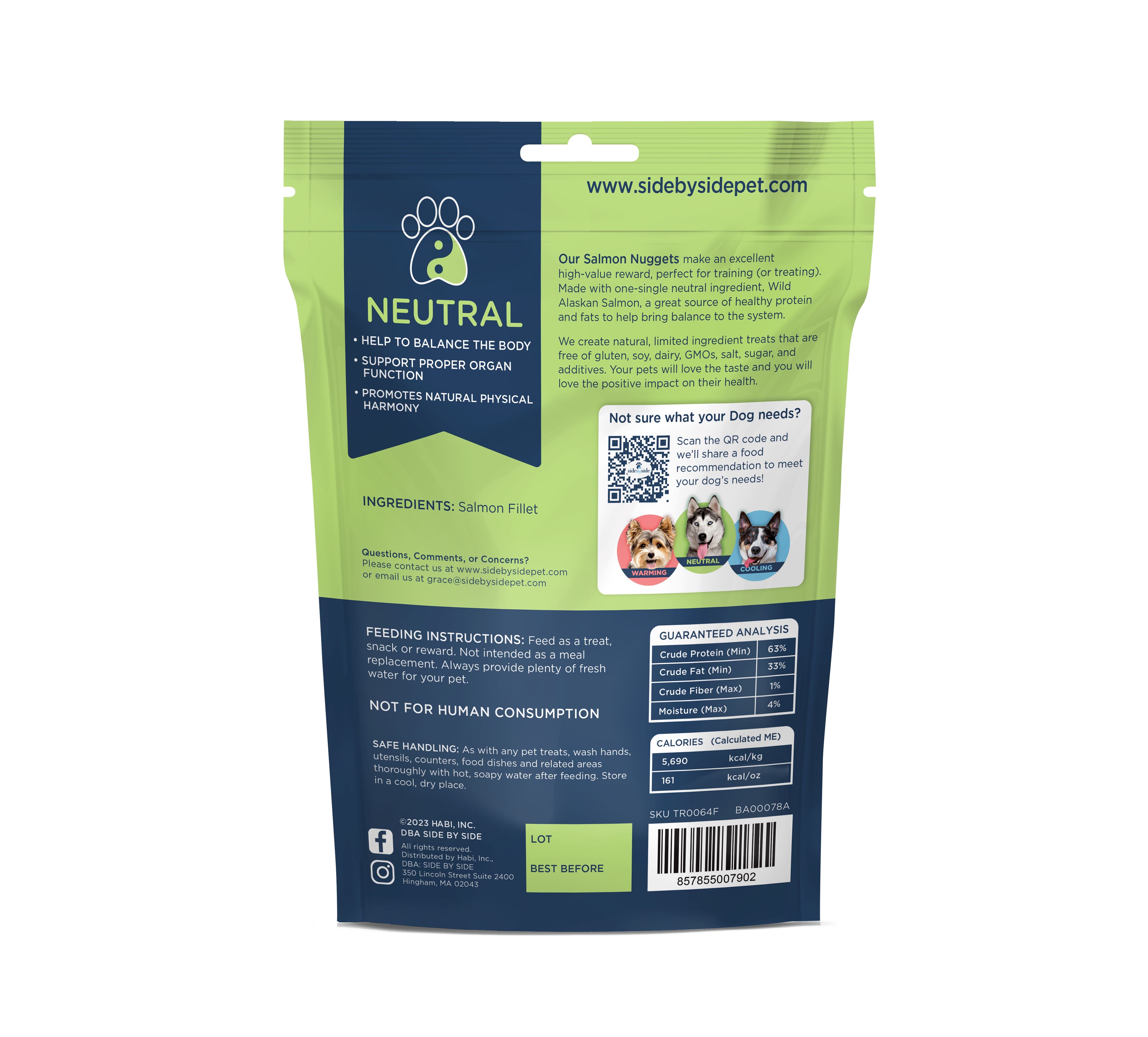
How to Use Animal Communication to Bond with Your Pet

Why Learn Animal Communication?
While animal communication is not a direct component of TCVM (Traditional Chinese Veterinary Medicine), using animal communication provides you with a more comprehensive understanding of your pet's and well-being.
Many holistic veterinarians incorporate different factors of animal communication all throughout the day while working with animals.
For example, body language is a form of animal communication all veterinarians use when working with pets.
For you, animal communication is a rewarding way to build a better bond with your pet!
Do you ever wonder what your pet is thinking, or wish your pet could tell you how he/she is feeling?
Believe it or not, your pet is constantly communicating with you 24/7.
And, if you take the time, you can understand the communication, enrich your relationship, and give your pet an even more fulfilling life.
In pet parenting, effective communication forms the foundation of a strong bond between humans and animals.
By understanding and utilizing animal communication techniques, yo can enhance your connection with your pet on a deeper level.
This article will guide you through the fascinating world of animal communication, offering practical strategies to foster a lasting bond with your furry companion.
The Art of Animal Communication: An Overview
Animal communication is the exchanging of information between humans and animals through various channels.
It involves understanding and interpreting your pet’s body language, vocalizations, and emotional cues.
Effective communication helps you to build trust, enhance mutual understanding, and create a harmonious relationship with your pet.
According to Judy Meyer, Author of The Animal Connection, the secret to communicating with your pet can be summed up in just two steps:
- Talk to them
- Listen to them.
It’s not complicated. It’s really that simple!
Non-Verbal Animal Communication: Understanding Your Pet's Language
Your pet speaks to you non-verbally all day long. Do you listen?
A critical part of animal communication is learning how to listen in the language your pet speaks.
Body Language
Body languate is a form of communication that provides insights into your pet’s emotions, attitudes, and intentions.

It is an essential component communication and plays a significant role in conveying messages, establishing connections, and interpreting social interactions.
For example, your pet's postures, such as tail position, ear position, and body stance, can convey important messages about their emotions and intentions.
As you pay attention to your pet’s body language, you will begin to notice patterns. Pay attention to the patterns!
As you do so, you will learn to recognize signs of happiness, fear, stress, and aggression. After a while, you’ll be able to take one look at your pet and understand his/her needs and feelings.
Another thing to remember is your pet is constantly observing you and reading your body language.
Also, as you work on communicating with your pet, ensure you are in the right frame of mind. Relax, and get in a comfortable position with your pet.
Facial Expressions
Just like humans, animals use facial expressions to communicate their emotions.
Pay close attention to your pet’s eyes, mouth, and overall facial expressions to gauge their mood and respond accordingly.
Sound Signals

Dogs barking, cats purring, or birds chirping can convey various messages.
So, pay close attention to your pet's different vocalizations.
Again, you will notice patterns. Pay close attention to the patterns, and you will soon associate them with specific emotions or physical needs.
Tuning into Telepathy: Deepening the Connection
Ok, you may need to force yourself to be open-minded about developing a telepathic connection with your pet.
Or, maybe you’re already open to it. Either way, just give it a try and see what happens!
Understanding Energy
Pets are masters at sensing energy!

For example, have you ever had the experience of being with your pet and meeting someone new?
Your pet reacts negatively, and later you find out that person was “not so nice?”
What happend was your pet sensed the person’s energy and was trying to give you a heads up.
Did you pick up on your pet's communication? Or, did you overlook it entirely?
Emotional Energy
Pets are incredibly sensitive to the emotional energy or vibes emitted by people.
They can detect shifts in energy levels, such as feelings of happiness, sadness, anxiety, or excitement.
Even subtle changes in a person's emotional state can be noticeable to a perceptive pet.
For example, have you noticed when you are angry your pet cowers or stays away? Or when you are nervous your pet acts jittery as well?
Intuition and Empathy
Pets possess a remarkable sense of intuition and empathy.
They can tune into the energy fields around them and pick up on the emotional and energetic vibrations of their human companions.
This intuitive understanding allows them to respond accordingly and offer comfort or support when needed.
For example, have you ever been sad and your pet wants to cuddle and make you feel better? It's because of intuitive understanding and empathy.
How to Connect
Follow the step below to begin connecting intuitively with your pet.
Don't be attached to the outcome, just relax and enjoy the process.
1. Create a Calm and Focused Mindset

First, find a quiet space where you and your pet can relax without distractions.
Then, clear your mind and cultivate a sense of calmness and receptivity.
2. Clear Distractions and Enhance Intuition
Next, limit external stimuli, such as loud noises or electronic devices, to create an environment conducive to telepathic communication.
Then, trust your instincts and intuition as you connect with your pet on a deeper level.
3. Move Your Focus Down into Your Heart
To communicate intuitively with your pet, you must move your focus down into your heart.
Start by sitting quietly, closing your eyes, and taking a few deep breaths.
Next, place your hands on your throat. Then, swallow and focus on your throat.
Afterward, move your hand and focus down to your heart and feel your heart beating. Pay attention to the rhythm of your heart.

Then, go into the tender place in your heart. The place where you think of how much you love your pet(s), even the ones that are no longer with you.
Sometimes our pets that have passed help us most feel that tender spot.
After you’ve done this several times, you will be able to immediately access this spot and won’t need to use the meditation.
4. Send and Receive Messages Telepathically
You will need to focus your thoughts and send clear messages to your pet, picturing the desired outcome or expressing your love and understanding.
Sending Messages
Focus on images rather than words. Imagery is a common ground for both human and animal brains. In other words, focus on “thinking” pictures to your pet.
For example, let’s say you want to calm your pet. To do so, create an image in your mind of a happy, relaxing time.
Maybe you are sitting on the couch cuddling and stroking your pet. Keep the image in your mind and “think” it to your pet.
Another example might be if your pet is acting depressed. In this situation, you’ll want to send your pet a happy message.
So, create an image in your mind of you and your pet doing something fun, like playing with a toy. Again, focus and “think” the image to your pet.
Receiving Messages
Also, be open to receiving telepathic responses from your pet, which may come from images, feelings, or words.
Most often, responses from pets come in images. For example, you might get a quick flash of a picture in your mind. Sometimes the picture is moving, like a video short.
Some people do not recieve any images at all. Instead, they receive waves of emotion.
For example, have you ever felt “the warm fuzzies” as your cat lays on your chest purring?
Or extreme sadness when you leave your dog at the kennel to go on a long trip?
If so, the waves of emotions you’re feeling may not be yours alone. Instead, you could very well be picking up on messages from your pet.
So pay attention to everything you receive. It’s also fun to keep a journal as you work with intuitive animal communication.
If you journal the images you receive from your pet, you can learn a lot about your pet’s inner life!
Strengthening the Bond through Shared Experiences

Engage in activities or rituals that promote bonding, such as grooming, playing, or simply spending quality time together.
The shared experiences deepen your connection and enhance your ability to communicate non-verbally.
Also remember, the key to enhancing your bond through shared experiences lies in being present, engaged, and attuned to your pet's needs and preferences.
In addition, it helps to tailor the activities to their individual interests and capabilities, and approach the experiences with enthusiasm, patience, and love.
By investing time and effort into these shared moments, you'll create a deeper, more meaningful bond with your beloved pet.
The Power of Empathy: Connecting on an Emotional Level
Empathy is the capacity to understand and share the feelings, perspectives, and experiences of others.
It involves being able to emotionally connect with someone else - putting yourself in their shoes and experiencing a sense of compassion and understanding for their situation.
Empathy is a vital aspect of healthy interactions, relationships, and communication. It fosters understanding, trust, and connection.
Pets appreciate empathy in the same way people do. And shared empathy also strengthens the bond and communication with your pet.
Cultivating Empathy for Your Pet's Feelings
Put yourself in your pet's paws and try to understand his or her emotions and needs.
Empathy allows you to respond sensitively and address your pet's emotional well-being.
Try to imagine what your pet feels: emotions, likes, dislikes, etc.
Pay attention to your pet's body language and sound signals, they are great tools for understanding what your pet is feeling and cultivating empathy.
Recognize and Address Anxiety or Fear
Pets experience anxiety and fear in certain situations just like people do.
You can help alleviate your pet's distress and build trust by identifying triggers and providing reassurance and comfort.
Reflective Listening
Just as humans benefit from being heard, pets appreciate attentive listening.
Pay close attention to their behaviors, vocalizations, and body language, responding with empathy and understanding.
Emotional Healing and Support
Animals can sense and absorb our emotions.
Offer a safe and nurturing space for your pet and provide emotional support during times of stress or change.
Your calm and loving presence can help them feel secure and loved.
Communicating through Positive Reinforcement
Positive reinforcement is a compassionate, effective, and mutually beneficial approach to training and interacting with pets.
It promotes trust, confidence, and emotional well-being while nurturing a strong bond between pets and their owners.
By focusing on rewards, encouragement, and positive experiences, pets are more likely to thrive, learn, and develop into well-behaved and happy companions.
Reward-Based Training

Use positive reinforcement techniques to encourage desired behaviors in your pet.
Reward them with treats, praise, or play when they exhibit positive actions, such as following commands or displaying good manners.
This positive association strengthens your bond and motivates your pet to continue learning and communicating with you.
Clicker Training and Verbal Cues
Clicker training is a powerful tool that marks desired behaviors with a distinct sound, followed by a reward.
Pairing verbal cues with actions helps your pet understand and respond to commands effectively.
Consistency and Patience
Consistent communication and patience are essential when training and reinforcing positive behaviors.
Avoid punishment or negative reinforcement, as it can damage the bond and hinder effective communication.
Honoring the Individuality of Your Pet
Pets, just like humans, are individuals with their own unique characteristics, personalities, and preferences.
While pets may belong to the same species or breed, they can exhibit distinct behaviors, temperaments, and traits that set them apart from one another.
Understanding Breed-Specific Traits and Needs
Different animal breeds have unique characteristics and requirements.
Educate yourself about your pet's breed to better understand their communication patterns and cater to their specific needs.

For example, one of the key differences between the cat brain and the dog brain is their cognitive function.
Cats are independent thinkers and problem solvers, while dogs are more socially intelligent and trainable.
Their brain size is different as well. A dog's brain is typically larger than a cat's brain.
A more significant proportion of the dog's brain is devoted to its cerebral cortex, or the area of the brain responsible for higher cognitive functions like perception, attention, and decision-making.
Recognizing Unique Personalities
Every pet has its own personality traits and preferences.
Observe and appreciate your pet's individuality, adapting your communication style to accommodate their distinct behavior and communication patterns.
Tailoring Communication Styles
Some pets respond better to visual cues, while others may be more attuned to verbal or touch-based communication.
Discover your pet's preferred communication style and adjust your approach accordingly to strengthen your connection.
Strengthening the Bond with Rituals and Activities
Rituals and activities play a crucial role in strengthening the bond between you and your pet.
 The shared experiences provide opportunities for connection, engagement, and mutual enjoyment.
The shared experiences provide opportunities for connection, engagement, and mutual enjoyment.The key to strengthening your bond through rituals and activities lies in consistency, patience, and genuine enjoyment.
Tailor the rituals and activities to your pet's individual preferences and needs, and approach them with enthusiasm and positivity.
By investing time and effort into these shared experiences, you'll nurture a deeper, more meaningful bond with your beloved pet.
Quality Time
Regularly set aside dedicated time to bond with your pet through interactive play, grooming, or cuddling.
These shared experiences foster a sense of connection and deepen the emotional bond.

Daily Routines and Establishing Trust
Consistency in daily routines, such as feeding, exercise, and rest, builds trust and helps your pet feel secure.
Establishing a predictable environment enhances communication and strengthens your relationship.
Mindfulness and Meditation with Your Pet
Engaging in mindful activities, such as meditation or relaxation exercises, with your pet by your side can create a profound sense of connection.
Focus on being present, breathing deeply, and cultivating a serene atmosphere to promote harmony and understanding.
By embracing the art of animal communication, you can bridge the gap between humans and animals, fostering a more profound understanding, trust, and affection.
As you embark on your journey, remember that patience, empathy, and a genuine willingness to connect are key.
Effective communication can forge an unbreakable bond with your beloved pet that will enrich both of your lives.
So, take the time to listen, observe, communicate with your pet, and watch your relationship blossom into something truly extraordinary.
And, if you find the concept of communication and energy important for you and your pet's lifestyle, you may be interested in Traditional Chinese Veterinary Medicine (TCVM) for your pet.
TCVM-trained veterinarians have a different perspective than regular vets. They treat your pet as a "whole," taking into consideration your pet's body, mind, spirit, and energy.
Sources:
- Meyer, J. (2000). The Animal Connection: A Guide to Intuitive Communication with Your Pet. Plume Books.
- Millan, C., & Peltier, M. J. (2006). Cesar’s Way: The Natural, Everyday Guide to Understanding and Correcting Common Dog Problems. Harmony.
- Are Cats Smarter Than Dogs? | Bond Vet. (n.d.). Bond Vet.


























